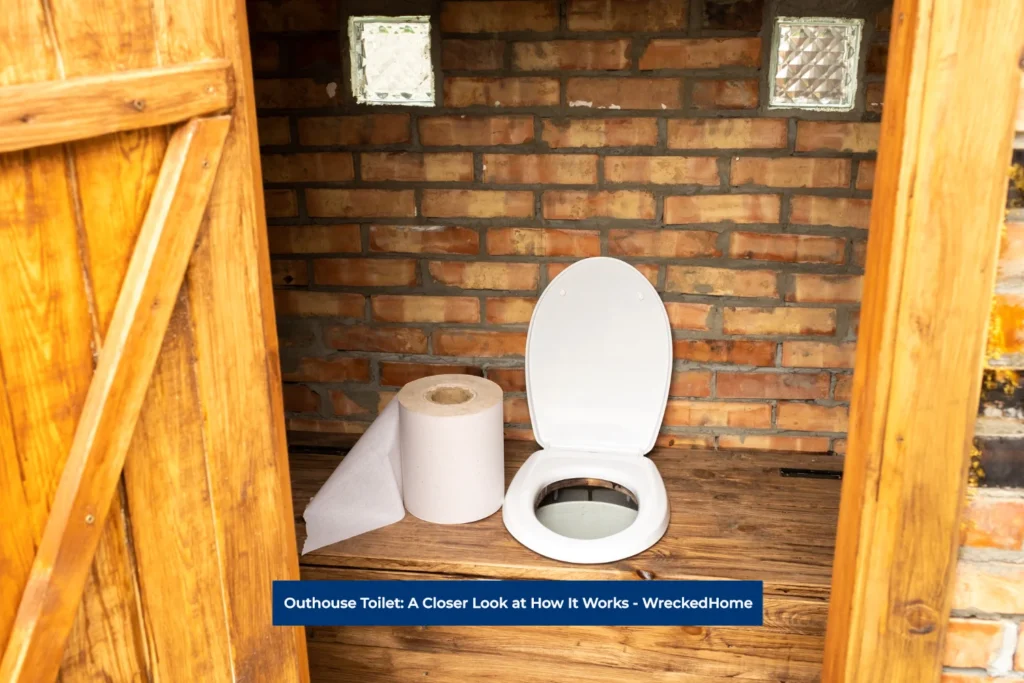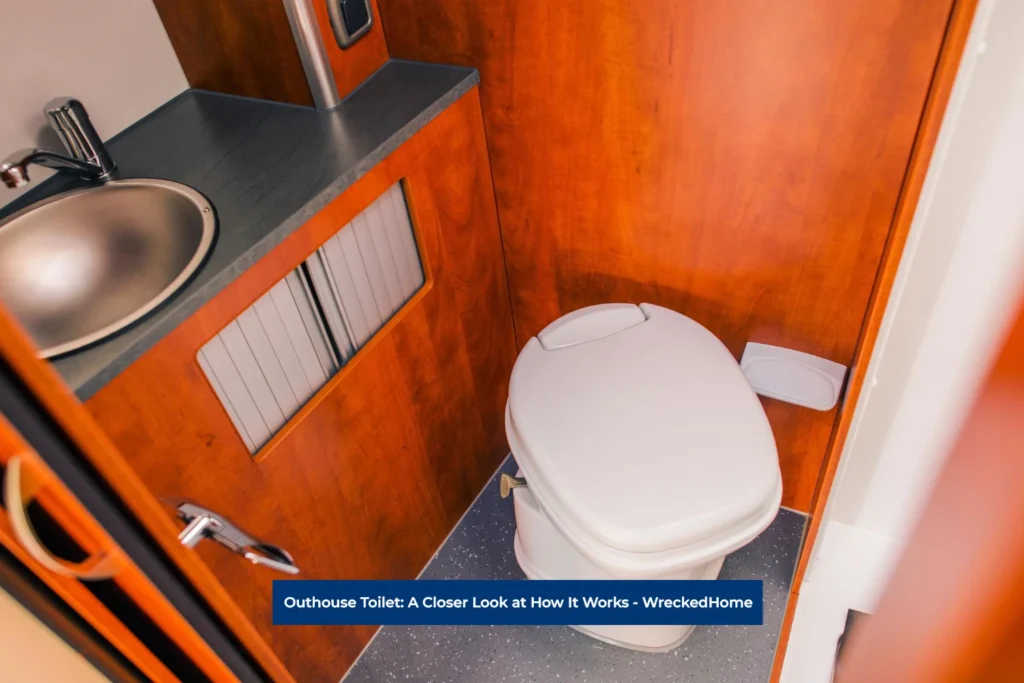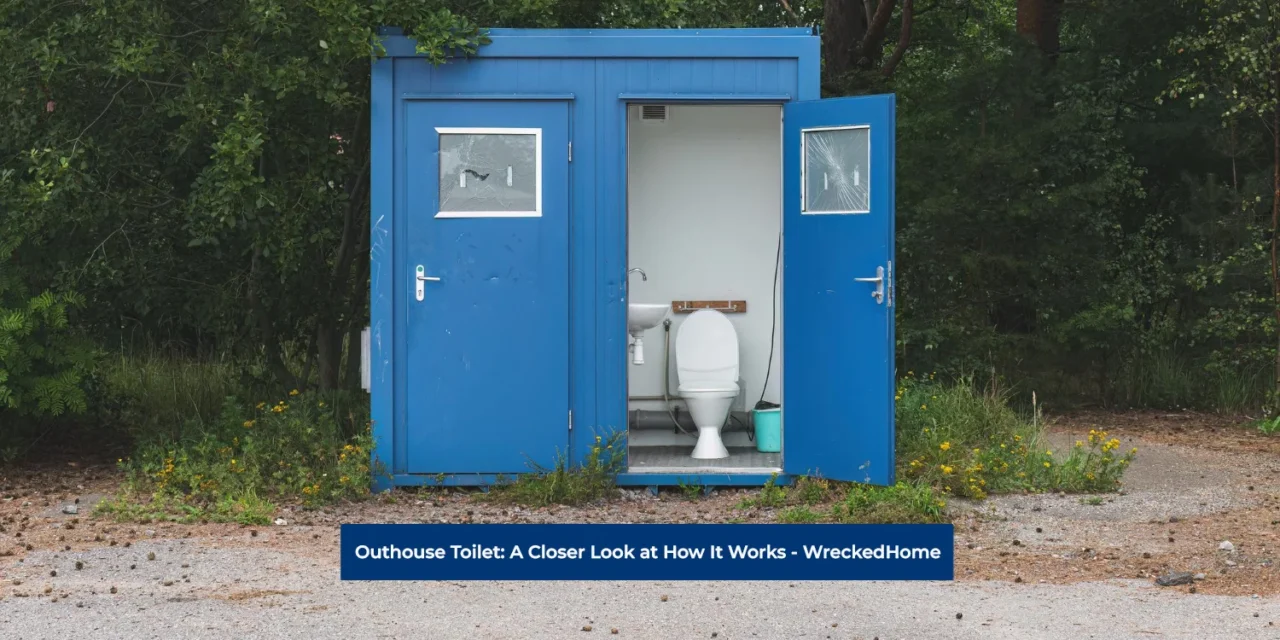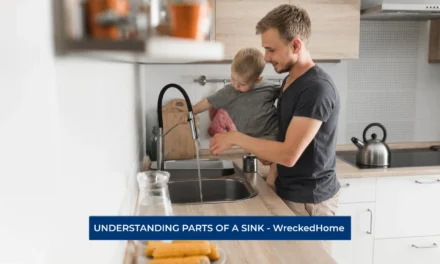An Outhouse toilet is a small structure that is made to hide a toilet. These toilets are not connected to a plumbing system and are made outside the main building. The kind of toilet used inside is called a pit toilet, bucket or vault toilet. They were used in the earlier times when plumbing was not invented. Nowadays, they are used as toilets for rural areas, campsites or historical reenactment sites.
In this article, we will take a look at how this toilet works, by exploring its components, how it’s designed and its maintenance.
The Structure Of An Outhouse Toilet

This kind of a toilet usually consists of three main components. These include:
- The Outer Structure
- The Toilet
- The Seating Arrangement
The Outer Structure
The outer structure is basically the part of the toilet that provides shelter, privacy and ventilation. This structure is made and constructed above the ground and It houses the other two components that are the pit and the seating arrangement. It can however, vary in design and the material used to build it.
- Materials: An Outhouse structure can be made of different materials. These materials include wood, metal, concrete or any other materials that are weather resistant. However, this may depend on the purpose of the outhouse and the available resources.
- Design: The design of this structure is usually quite simple nowadays. However, in historical times they were made according to the architectural style of that era and were quite decorative.
- Ventilation: The outer structure needs proper ventilation so that odors are removed with proper airflow. For this purpose, either small holes are made in the walls to encourage fresh air to circulate or simple vents and windows are used.
The Toilet

Thereare different types of toilets that can be installed in an outhouse toilet. This includes the following:
- A Pit Latrine: This is approximately a 4 feet deep hole in the ground that is known as a pit to collect human waste. Once they are full, the owner has two options. These options are to either scoop it out and use it as fertilizer. You can choose to relocate the outhouse.
- A Vault: Vaults are containers that hold human waste which can be sealed. once full, they are used in modern outhouse toilets. They are used as they prevent the waste from polluting the underground water supply and are easy to manage since they can be replaced or emptied whenever full.
- Bucket Toilet: A bucket toilet consists of a seat attached to a bucket which can be easily removed and emptied in the composting piles by the owner once full.
The Seating Arrangement
The seating arrangement in an outhouse is where one has to sit, this seat can be a simple wooden seat with a hole and a hinged lid which is optional but preferred.
- Toilet Seat: The seat is supposed to be at the top of the toilet like any other toilet seat. It can be made of materials like wood, metal or plastic however, traditionally simple wooden planks are used with a hole.
- Privacy: these toilets are usually made at places that are secluded however, even then privacy is essential. Therefore, a curtain or a door is always there for privacy.
The Functionality of an Outhouse Toilet
Now let’s have a look at how an outhouse toilet functions. It involves two processes. These are:
- Usage
- Waste Disposal
Usage:
These toilets can be used while in two positions, either squatting or sitting. It depends on the height of the toilet seat.
Waste Collection:
If the toilet is made over a pit then the waste is collected under ground where it falls accumulates over time. However, eventually it becomes full and needs cleaning or relocation.
For a vault, bucket or drum latrine the waste is collected in a container that can be sealed once full and emptied or replaced with a new container. The waste from these containers is sent to a facility where it is composted before use. Nowadays, composting toilets are also preferred as they reduce waste and convert waste to nutrient rich compost.
Outhouse Toilet Maintenance and Environmental Considerations
It should be understood by now that outhouses are still used in many areas. However, with proper maintenance it can last a long time at a single spot and is required for hygiene and sanitation.
Regular Cleaning:
The cleaning of the inside of the outhouse toilet is required to ensure a clean space. It involves removing the waste buildup, ensuring availability of toilet paper and sanitizing all the surfaces of the toilet. If a vault is used instead of a pit then it is essential to empty and replace it. However, the frequency depends on the size of the vault and its usage.
Odor Control:
In order to control odors two things are essential, ventilation and deodorizers. For proper ventilation, windows and vents should be made in the walls of an outhouse to encourage airflow.
Different materials can be added to remove odors from the pit of the outhouse such as:
- Lime: it is usually used to reduce smell and odors in an outhouse toilet. However, it may slow down waste decomposition.
- Cedar shavings: These have a pleasant smell and work better than lime.
- Sawdust: By sprinkling a layer of saw dust you can easily reduce smell and let the waste decompose.
- Peat moss: it encourages a crust to be built on top of the waste which stops the odor from leaving the toilet.
- Wood ash: it can be sprinkled on waste in the outhouse to reduce smell.
Another way to reduce smell is by keeping deodorizers in outhouses. They have chemicals that suppress odors. However, these substances should be used according to manufacturer instructions.
Visit our store for 10% off our Cleaning Products here.
Environmental Considerations
It is important to do proper disposal of waste according to the rules and regulations of your county/state. In a pit-based system, it is important to consider the location of the pit and its cleaning process according to local rules. In a vault system, it’s essential to transport the waste to a reliable facility where it is processed further towards composting.
Moreover, a proper design of the outhouse toilet including proper seating and design can have a great impact on the environment.
Modern Innovations in Outhouse Toilets
In this day and age, traditional outhouses are preferred and remain in use. However, with modern upgrades, the sanitation has significantly improved in these facilities. These upgraded versions of outhouse toilets are mentioned below:
Composting Toilets:
Composting toilets are popular in areas that are remote and environmentally sensitive. These toilets use microbial decomposition to convert waste into compost which reduces the need for waste disposal.
Incinerating Toilets:
In the design of modern day outhouse toilets, incinerating toilets are also used. They burn waste at high temperatures and reduce it to ash. This system is compact and entirely odor-free.
Conclusion
Outhouse toilets are a great option for being set up in rural areas like farms, camping sites, national parks, etc. However it’s important to understand how they work. To build such a toilet it’s essential to check whether the area is feasible for it’s set up or not.
it’s essential to check for an underground water source to ensure that the waste doesn’t get in contact with the water supply, it’s best to use a composting toilet if water supply can’t be avoided. This way they can provide a sanitary facility and help save the environment.
Visit our website for more articles that can help your resolve several issues around your house.
For any repairs, installations, builds, or questions; We recommend you to hire a professional. Find A Pro Near You Here!
Frequently Asked Questions FAQs
What is an outhouse toilet, and how is it different from a conventional indoor toilet?
An outhouse toilet is an outdoor toilet which does not rely on indoor plumbing, it’s also known as a pit toilet or a privy. It is quite different from a traditional toilet as it’s located away from the main area and uses a pit or vault to collect the waste material.
How does an outhouse toilet work?
The user of this toilet either squats or sits on a toilet seat depending on the height of the seat. Then waste is collected directly into a pit or vault located underneath the toilet. Traditionally, in the pit system, the waste is collected until it’s full. After that, it’s scooped out and cleaned where the outhouse is relocated.
What happens to the waste that is collected in an outhouse toilet?
The waste that is collected in an outhouse toilet is usually not treated on site. In a pit-system it decomposes naturally due to microbial action with time. On the other hand, in a modern vault system, the waste is sent to wastewater treatment facilities in order to be processed.
How often does an outhouse toilet need to be maintained?
The frequency of maintenance depends on how often it’s used and which system is being used, either pit or vault. If it has a pit then relocation or cleaning is done. With a vault system it needs to be emptied from time to time depending on its capacity.
Are outhouse toilets environmentally friendly or not? Outhouse toilets are more environmentally friendly than flush toilets because they use less water and do not require an infrastructure that requires plumbing. However, it’s essential to allocate a suitable location and a waste management plan to minimize environmental impact.





































